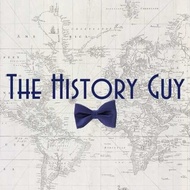
Join The History Guy from YouTube in conversation about his videos and various topics in history. Here you can find behind-the-scenes peeks of the set and The History Cats. Share ideas for future videos or ask questions of both the community and The History Guy himself. Early releases and the occasional extras are available for supporting members.
Nearly forgotten amid the Union victories of 1863 was the Union attempt to bring the war back to where it started: Charleston, South Carolina. The siege of Charleston became the site of numerous engineering innovations that presaged warfare of the next 60 years, as the North tried to take the city and fort that symbolized the birth of secession.
The plot of the Rue of Saint Nicaise and its use of an infernal machine played a vital role in the career of Napoleon Bonaparte, and transformed the very concept of assassination, resulting in a new definition of a word all too familiar today: terrorist.
Stories of the suffering, and attempts to celebrate Christmas among soldiers at the front during war, including the 1914 “Christmas truce,” remind us of the blessings of Christmas even in the worst of times. But one Christmas stands out for sheer desperation.
On December 19, 1944 the submarine USS Redfish accomplished a rare feat in the second world war, sinking a Japanese fleet aircraft carrier. It was just one event in the service of a submarine that entered the second world war rather late in the game, but found distinguished service during the second world war and beyond. In fact, there is a good chance you’ve seen USS Redfish, even if you didn’t know it at the time.












